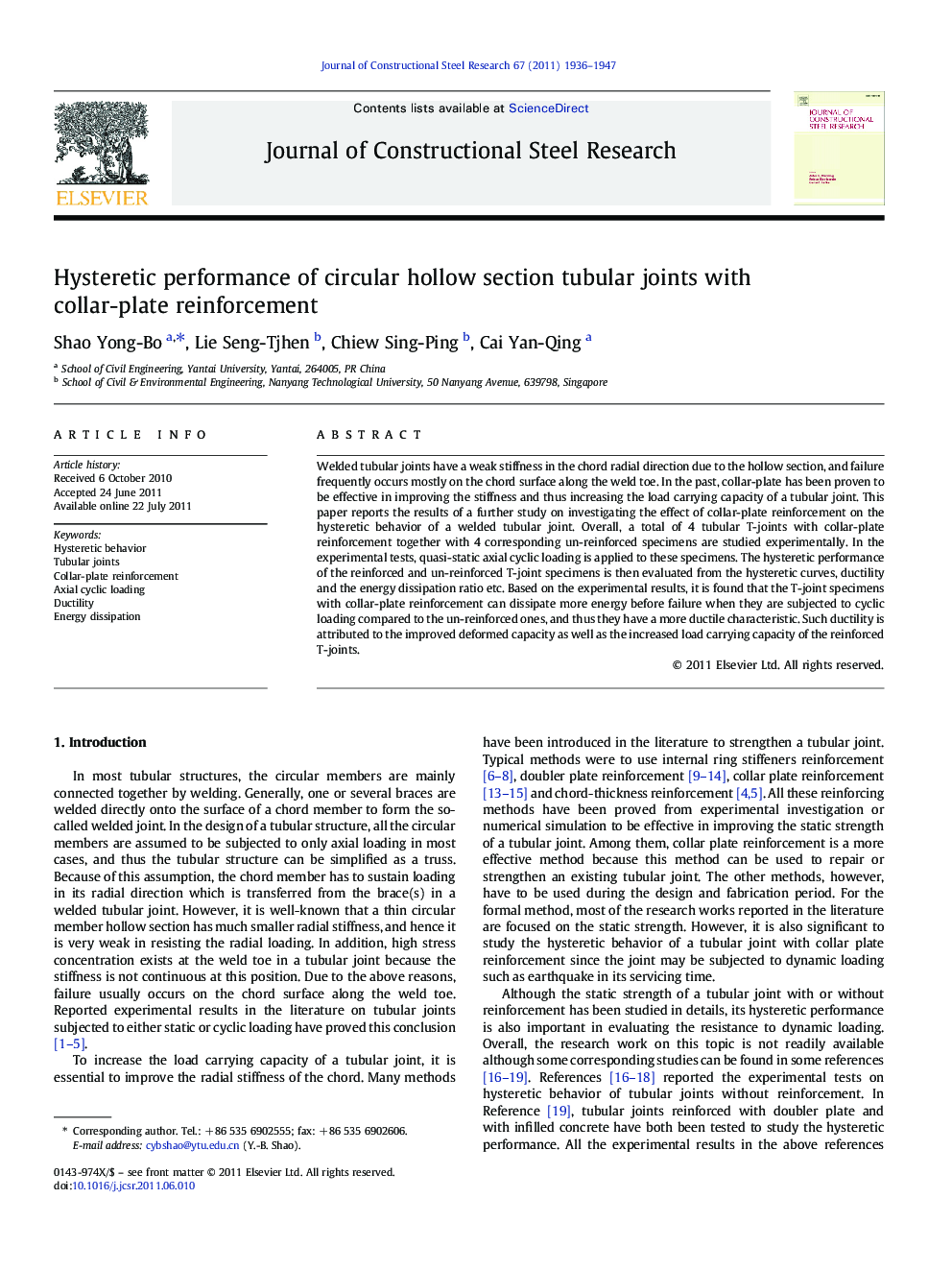| Article ID | Journal | Published Year | Pages | File Type |
|---|---|---|---|---|
| 285347 | Journal of Constructional Steel Research | 2011 | 12 Pages |
Welded tubular joints have a weak stiffness in the chord radial direction due to the hollow section, and failure frequently occurs mostly on the chord surface along the weld toe. In the past, collar-plate has been proven to be effective in improving the stiffness and thus increasing the load carrying capacity of a tubular joint. This paper reports the results of a further study on investigating the effect of collar-plate reinforcement on the hysteretic behavior of a welded tubular joint. Overall, a total of 4 tubular T-joints with collar-plate reinforcement together with 4 corresponding un-reinforced specimens are studied experimentally. In the experimental tests, quasi-static axial cyclic loading is applied to these specimens. The hysteretic performance of the reinforced and un-reinforced T-joint specimens is then evaluated from the hysteretic curves, ductility and the energy dissipation ratio etc. Based on the experimental results, it is found that the T-joint specimens with collar-plate reinforcement can dissipate more energy before failure when they are subjected to cyclic loading compared to the un-reinforced ones, and thus they have a more ductile characteristic. Such ductility is attributed to the improved deformed capacity as well as the increased load carrying capacity of the reinforced T-joints.
► Hysteretic performance on collar plate reinforced tubular T-joints are analyzed. ► Experimental test and finite element method are both used in the analysis. ► Collar plate reinforcement can improve the hysteresis of tubular T-joints. ► Reinforcing efficiency is assessed based on parametric study.
